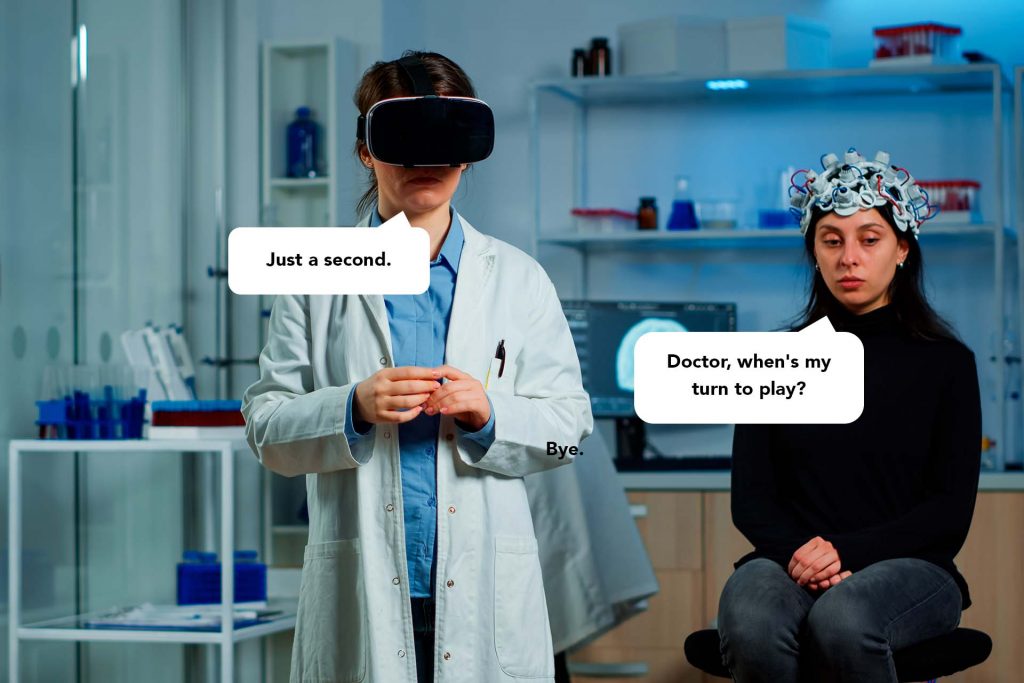The Top Trends Driving Digital Healthcare in 2022

For over 2 years now, technology has been helping healthcare providers standing at the forefront of the pandemic battling against the new virus. While 2020 completely reshaped the way healthcare is provided, 2021 brought new challenges digital healthcare had to solve — global vaccination, new COVID-19 strains, physician burnout, and an ever-growing patient load. So what does the coming year have in store? Let’s have a look at the 3 hottest trends that will drive the digital transformation of the healthcare industry in 2022.
Telehealth

Telehealth has been a real lifesaver for healthcare providers looking for new ways to deliver care to patients, when in-person doctor visits are impossible or unsafe, especially for rural, at-risk, non-emergent, and non-urgent patients.
Though not a new concept, telehealth was underutilized before 2020. According to McKinsey & Company, today, patients use telehealth services 38 times more often than in the pre-COVID era.
It is one of the fastest-growing healthcare sectors. The global telemedicine market is expected to leap from $50 billion in 2019 to $460 billion by 2030, with the U.S. making the largest contribution. Today, North America offers the largest telemedicine market in the world which is forecast to be worth $35 billion by 2025.
The U.S. Centers for Medicare and Medicaid Services is looking to evaluate the need to include telehealth services on the list permanently after the pandemic. The 2022 Physician Fee Schedule final rule extends the coverage of telehealth services through December 31, 2023. This also applies to the use of virtual care technology for behavioral health visits, which is a great way to increase access to psychological support for patients suffering from the effects of the pandemic on their mental health.
Vikram Savkar from Wolters Kluwer also believes that telehealth will likely outlive the pandemic and make a permanent and more prominent spot in the healthcare ecosystem due to its convenience, doorstep accessibility, ease of use, and cost-effectiveness. According to a study, 40% of patients surveyed will continue to use telehealth after COVID-19 and 58% of physicians will continue to view visual care more favorably than ever before.
Artificial Intelligence
According to the IEEE study, in the next 1-5 years artificial intelligence will be the leading innovative force in virtually every industry. And healthcare is no exception.
The pandemic has given artificial intelligence unimagined opportunities for development. Today, AI-powered tools enable providers to more quickly, cost-effectively, and with 92% accuracy diagnose COVID-19 from radiography images, determine which patients will need a ventilator to breathe, predict pandemic outbreaks and spread, speed up the drug discovery and vaccine development, and much more.
In addition to improving the quality of care, streamlining workflows, and enhancing patient outcomes, artificial intelligence enables providers to reduce costs. Accenture believes that the use of AI can create $150 billion in annual savings for the U.S. healthcare industry by 2026. And the three applications expected to bring the most value in the coming years will be robot-assisted surgery, virtual nursing assistants, and administrative workflow assistance.
Experts expect the global AI in healthcare market to accelerate the digital transformation of the healthcare sector in 2022 and reach $61.59 billion by 2027 registering a high compound annual growth rate.
Virtual Reality

Today, virtual reality, long used mostly in video games, is seeing many applications all across the healthcare landscape. It helps train surgeons by creating completely realistic and immersive operating room environments, where students can learn how to perform surgeries without involving the actual dead human body. And the new teaching approach shows very promising results. According to a study by the University of California, students trained with VR completed an orthopedic procedure an average of 20% faster than those learned traditionally.
Virtual reality also shows great promise for physical therapy. Using VR tools allows caregivers to create highly motivational and enjoyable rehabilitation activities for patients with impairments in the vestibular system, Parkinson’s disease, multiple sclerosis, stroke, injuries, and various orthopedic conditions. VR-assisted therapy can also benefit children suffering from autism, cerebral palsy, attention deficit disorder, hypotonia, and developmental delay by offering them a playful and engaging alternative to traditional exercises.
According to Scientific American, virtual reality technology has a powerful ability to relieve pain, soothe nerves, and improve overall mental health. Therefore, the use of VR applications can be effective in treating a great range of psychiatric disorders, including PTSD, substance addiction, anxiety, phobias, eating disorders, depression, and psychosis. This is especially helpful amid the global mental health crisis caused by lockdowns, COVID-19 restrictions, social isolation, unemployment, financial losses, uncertainty, and chaos. In 2021, 19% of adults are suffering from a mental illness, which is more than 47 million Americans, reports MHA.
The potential of virtual reality in healthcare is yet to be discovered, so 2022 will see it driving digital transformation all across the industry’s landscape. Experts forecast the market to reach $9.5 billion by 2028 and expand at a CAGR of 27.2% in the 2021-2028 period.
Embrace Healthcare Digital Transformation with Softarex
At Softarex, we are excited to see the coming year be full of accessible care, smart AI solutions, and the industry’s emphasis on mental health. And as a team of IT professionals, we’ll stay dedicated to helping healthcare providers across the world embrace the power of digital technology to embrace the needs of their employees and deliver high-quality, patient-centered, and cost-effective care to patients.
We are always eager to collaborate with medical professionals to create projects that deliver real value to individuals and the system as a whole. If you are interested in developing software for your organization, feel free to contact us. Our consultant will get in touch with you sharply to discuss your needs.





